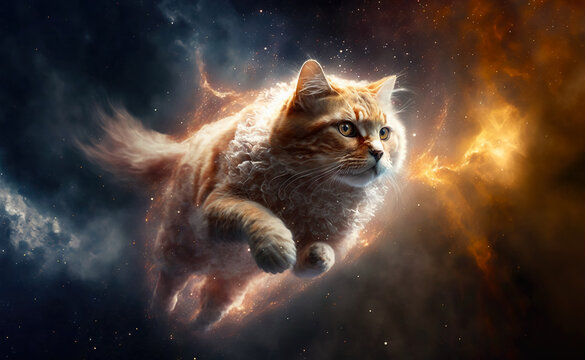Cat Paws in Zero Gravity: Unveiling the Mysteries of Feline Locomotion in Space
Introduction:
Cats, known for their grace and agility, exhibit fascinating behaviors and adaptations to their environment. As humans venture into space exploration, the question arises: How do cats fare in the unique conditions of zero gravity? In this comprehensive blog post, we delve into the realm of cat paws in zero gravity, examining their locomotion, adaptations, and welfare in this extraterrestrial environment.
Understanding Zero Gravity:
Zero gravity, also known as microgravity, is a state where objects experience weightlessness due to the absence of gravitational forces. This phenomenon is encountered in space, where objects float freely without the downward pull of gravity. Cats, like humans and other animals, must adapt to these unique conditions to maintain their mobility and well-being.
Locomotion and Behavior in Zero Gravity:
In the absence of gravity, cats exhibit altered movement patterns. They no longer rely on gravity for support and propulsion, leading to unique locomotion techniques. Here’s an exploration of their behaviors in zero gravity:
- Floating and Somersaulting: Cats can float freely in zero gravity, much like astronauts. They may engage in somersaults and playful tumbling, taking advantage of the lack of gravitational constraints.
- Pushing and Gripping: Without gravity, cats use their paws to push against surfaces to propel themselves. They may grasp onto objects, fixtures, or even each other for stability and movement.
- Wall Walking: Cats have been observed walking on walls and ceilings in zero gravity. Their flexible bodies and sharp claws allow them to grip onto surfaces and navigate in all directions.
- Playing and Hunting: Cats can engage in playful behaviors and even hunt in zero gravity. They exhibit similar predatory instincts, using their paws to capture and manipulate objects, albeit in a modified manner.
Adaptations for Zero Gravity:
Cats possess certain adaptations that facilitate their survival and comfort in zero gravity:
- Muscle Strength: Cats have strong muscles, particularly in their legs and paws. These muscles help them push against surfaces, maintain balance, and navigate in the absence of gravity.
- Flexible Joints: Cat joints are highly flexible, enabling them to contort their bodies and maneuver in tight spaces or challenging angles.
- Sharp Claws: Cats’ sharp, retractable claws provide traction and grip on various surfaces, allowing them to hold onto objects and propel themselves in zero gravity.
- Sensory Perception: Cats possess acute senses, including balance and spatial awareness, which aid them in adapting to the unfamiliar conditions of zero gravity.
Welfare and Health Considerations:
While cats are capable of adapting to zero gravity, it’s crucial to consider their well-being and health in this environment:
- Nutrition and Hydration: Cats require a balanced diet and adequate hydration in space as on Earth. Ensuring their nutritional needs are met is essential for maintaining their health.
- Exercise and Stimulation: Cats need exercise and mental stimulation to thrive. Providing interactive toys, climbing structures, and opportunities for play can help maintain their physical and mental well-being.
- Veterinary Care: Access to veterinary care is vital for cats in space, as they may encounter unique health issues or injuries related to the zero-gravity environment.
- Psychological Well-being: Cats are social creatures and may experience stress or anxiety in unfamiliar environments. Providing them with familiar objects, routines, and interactions can help alleviate these concerns.
Conclusion:
Cats exhibit remarkable adaptations and behaviors in zero gravity, demonstrating their resilience and ability to thrive in unique environments. As we venture further into space exploration, understanding cat paws in zero gravity not only expands our knowledge of animal physiology but also highlights the importance of considering animal welfare and well-being in extraterrestrial settings. By studying and adapting to these challenges, we can open doors for scientific advancements and ensure the safety and health of our feline companions in the cosmos.







